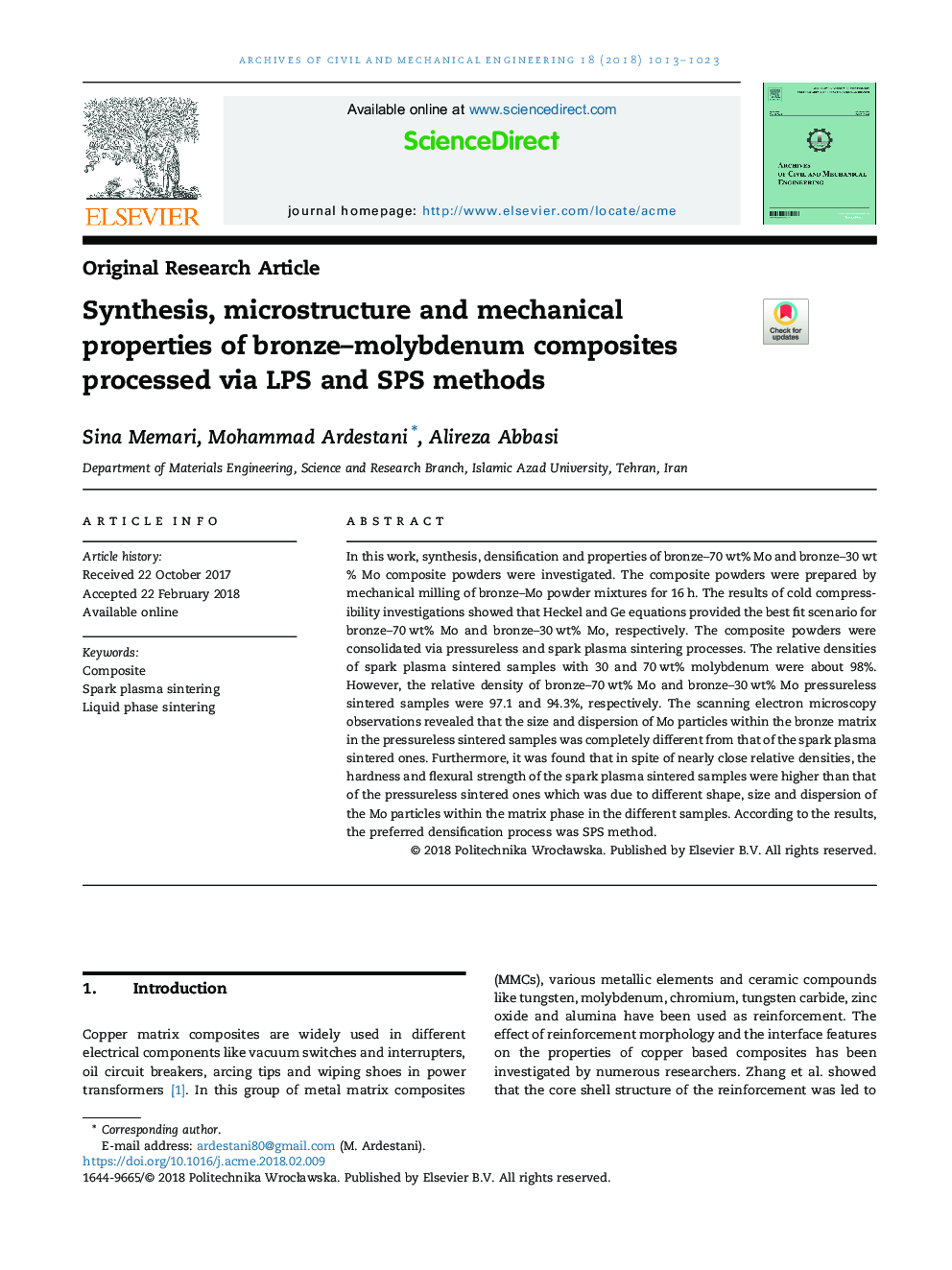| Article ID | Journal | Published Year | Pages | File Type |
|---|---|---|---|---|
| 6694500 | Archives of Civil and Mechanical Engineering | 2018 | 11 Pages |
Abstract
In this work, synthesis, densification and properties of bronze-70Â wt% Mo and bronze-30Â wt% Mo composite powders were investigated. The composite powders were prepared by mechanical milling of bronze-Mo powder mixtures for 16Â h. The results of cold compressibility investigations showed that Heckel and Ge equations provided the best fit scenario for bronze-70Â wt% Mo and bronze-30Â wt% Mo, respectively. The composite powders were consolidated via pressureless and spark plasma sintering processes. The relative densities of spark plasma sintered samples with 30 and 70Â wt% molybdenum were about 98%. However, the relative density of bronze-70Â wt% Mo and bronze-30Â wt% Mo pressureless sintered samples were 97.1 and 94.3%, respectively. The scanning electron microscopy observations revealed that the size and dispersion of Mo particles within the bronze matrix in the pressureless sintered samples was completely different from that of the spark plasma sintered ones. Furthermore, it was found that in spite of nearly close relative densities, the hardness and flexural strength of the spark plasma sintered samples were higher than that of the pressureless sintered ones which was due to different shape, size and dispersion of the Mo particles within the matrix phase in the different samples. According to the results, the preferred densification process was SPS method.
Related Topics
Physical Sciences and Engineering
Engineering
Civil and Structural Engineering
Authors
Sina Memari, Mohammad Ardestani, Alireza Abbasi,
